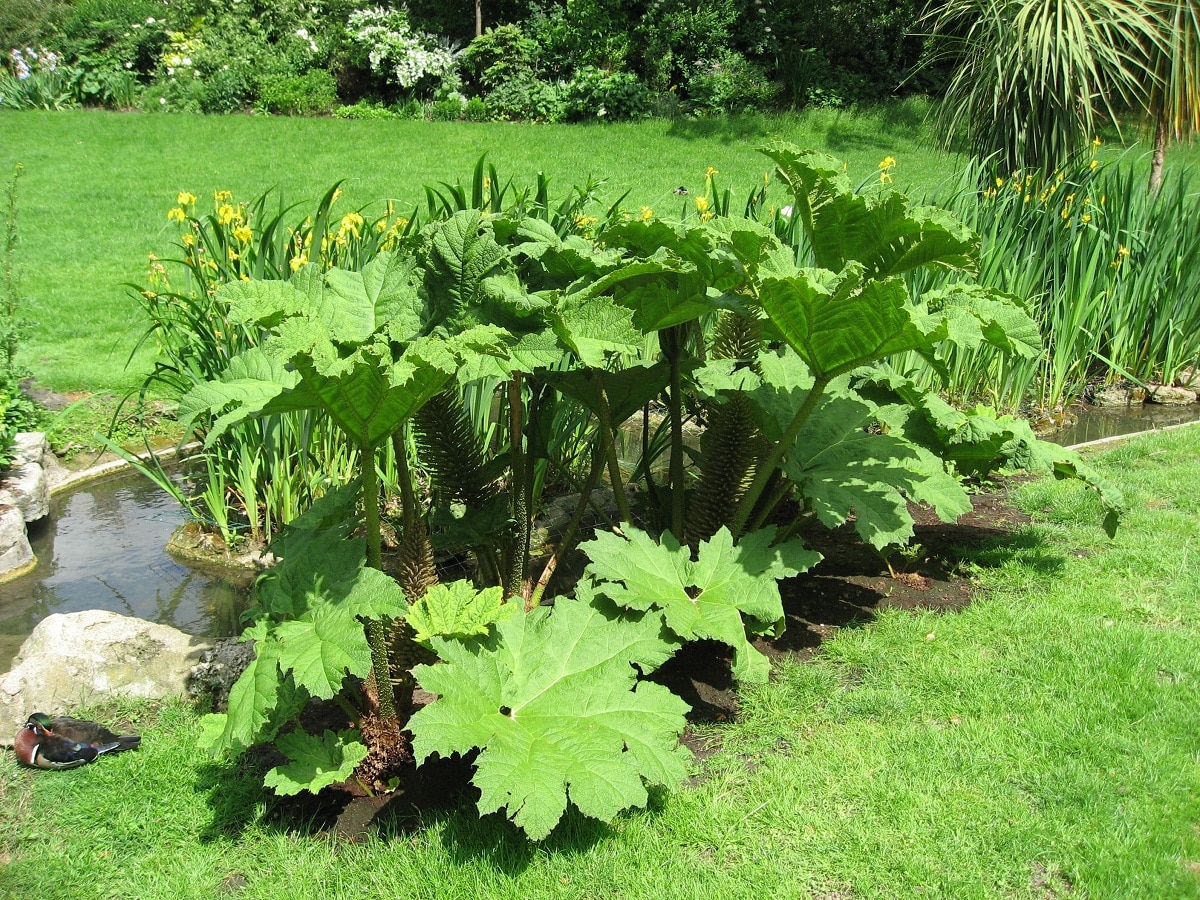
Today you are going to meet a plant whose leaves are so large that you may have to make room for it in your garden, if at any time you decide to get a specimen like this one. The genus Gunnera comprises 40-50 species whose foliage varies greatly in size. While the lobed foliage of gunnera manicata grows up to 6.4 meters wide and 10 meters high, the Gunnera albicarpa it has leaves that are only 1-2 cm long.
Plant the gunnera manicata in your garden or orchard without fail in the attempt is very easy, since we will give you all the necessary information so that you have at hand. The genus Gunnera is endemic in certain regions of Central and South America, Australia, New Zealand, Southeast Asia, Africa and Madagascar. The species included in this genus are herbaceous flowering plants that belong to the Gunneráceas family.
General data of the Gunnera Manicata

This is native to southeastern Brazil and it is one of the popular species to which the Royal Horticultural Society has awarded the Prize of Merit for Gardens. This herbaceous plant is grown mainly for its huge leaves.
It goes without saying that gardening enthusiasts who plan to include this plant in their garden they need to make sure their garden is big enough to house this plant.
It grows well in warm climates, so if you want this plant to flourish, be sure to provide it with a humid environment. Although at the gunnera manicata it is also called giant rhubarb, its leaves are not edible. In fact, this plant must be handled with care, since under the large leathery umbrella-shaped leaves are the spikes.
Plant characteristics
It is a species that is winter hardy to USDA Zone 7 where it is best grown in fertile soils, rich in humus, consistently moist to boggy partly in the shade.
When cultivating them, you have to be aware that the soil and / or substrate does not dry out completely. The plants are intolerant of extreme heat or cold. They are rarely successful in hot or dry climates.
In the northern parts of the growing area of this plant, the plants should be placed in zones protected from dry winds and with a dry winter mulch. Bare roots should be lifted before the first fall frost to store in cool areas (approximately 5 degrees Celsius) and in a dry medium such as peat moss or vermiculite.
The plants can also be grown in containers that are moved to a cool, frost-free place, such as an unheated garage, where will remain inactive during the winter.
Farming

All you have to do to grow the plant called giant rhubarb, is to follow the steps that we will describe below: Put the dried seeds under a layer of moistened coffee filters or under folded kitchen towels.
Then store them in a sealed plastic container that is kept in a sunny place when possible and with the heat of a 60 watt bulb when there is no sun. Keep the seeds like this for at least 14 days or until they have germinated and don't let the seeds dry out.
When you start to see the sprouts of the seeds, you should plant them in shallow holes of 10 cm during the middle and the end of spring in a swampy place where the soil is deep, constantly moist and enriched with organic compost, manure, and a couple of handfuls of slow-release fertilizer.
Use about half a cubic meter or so of clay mixed with garden soil, compost and manure, if the existing soil conditions are not rich enough. Take care of your plant as it grows through spring and summer, making sure its planting spot is constantly moist. The plant is not prone to disease, so it should not be necessary to use additional fertilizers.
If you've chosen a suitable moist environment for your roots, don't you should have to water the plant at all. Once the giant rhubarb is older and has started to sprout large shoots and leaves, cut them within 3 meters of the root ball and stack them tent-like on top each fall.